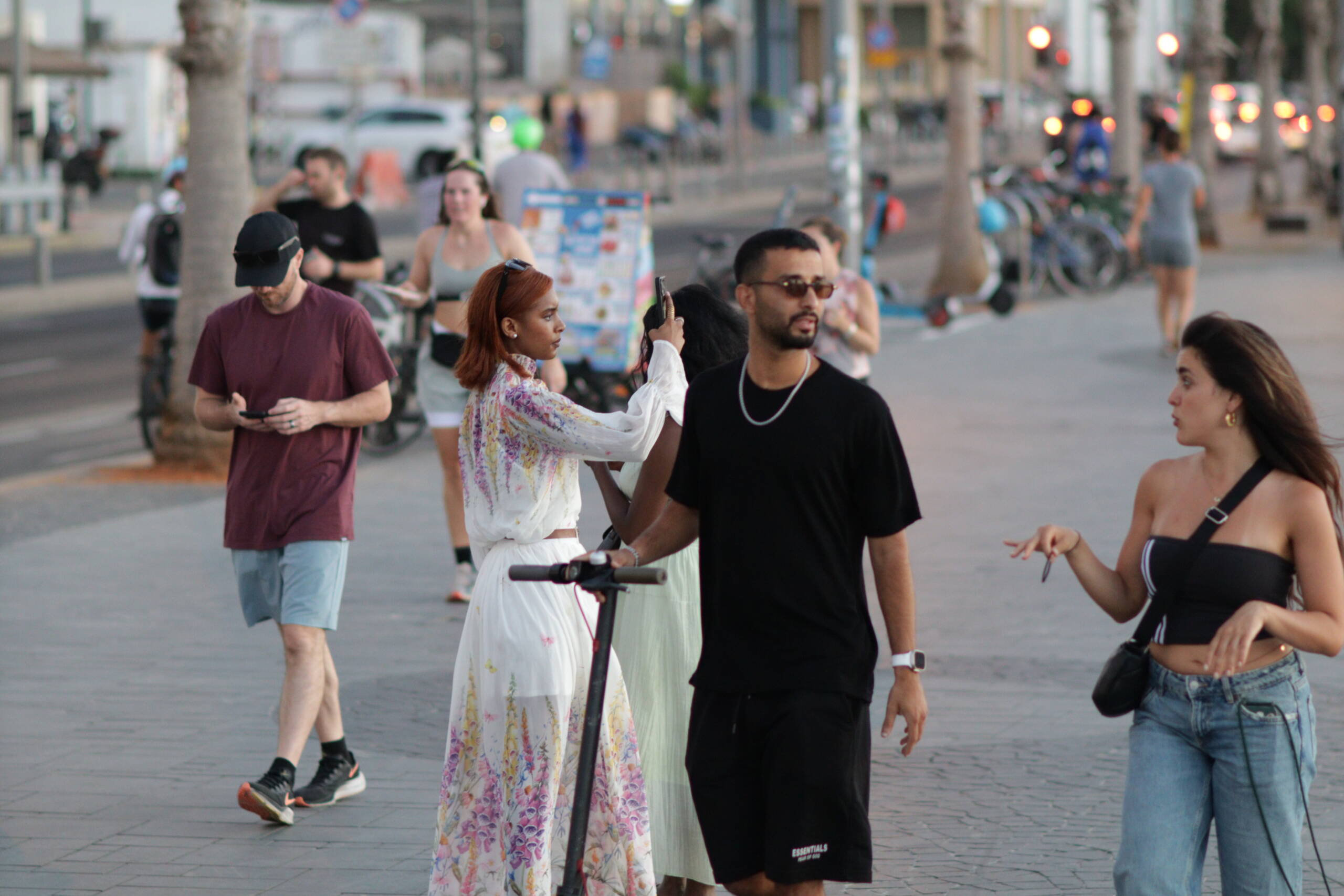The promenade comes alive in this frame, a slice of late-afternoon city life where every detail speaks about movement, presence, and modern rhythms. In the foreground, a man in black casual wear rides an electric scooter with a kind of effortless cool, his sunglasses catching the fading light, while next to him a woman animatedly explains something with expressive hands—her loose jeans and black crop top a relaxed contrast to the sleek lines of the scooter. Just behind them, another woman in a flowing white dress patterned with pastel flowers lifts her phone high, perhaps capturing the view, her posture elongating the fabric into motion, making it almost like part of the scenery. She becomes both participant and observer—walking forward but archiving the moment for later.

Around them, you notice how mobility takes many forms. A man in a burgundy t-shirt walks with his eyes glued to his phone, navigating a digital path as much as the stone pavement beneath his feet. Further back, cyclists and joggers carve their own routes, and the palm-lined boulevard hums with the quiet buzz of shared space—wheels, sneakers, sandals all threading into one urban rhythm. Bicycles lean casually against the promenade rails, scooters are parked upright like waiting companions, and in the blurry depth, car headlights flicker into evening, blending with the pedestrian stream.
This is urban mobility in all senses: mechanical and human, slow and swift, physical and digital. Every person in the frame carries a different pace, a different story of why they’re there—some in transit, some in conversation, some documenting, some absorbed in screens. It’s not chaos, but a tapestry of rhythms stitched together by the city’s energy. Watching it, you sense how mobility is no longer just about moving from one place to another; it’s about how we weave our identities, technologies, and relationships into the streets we walk every day.
Leave a Reply